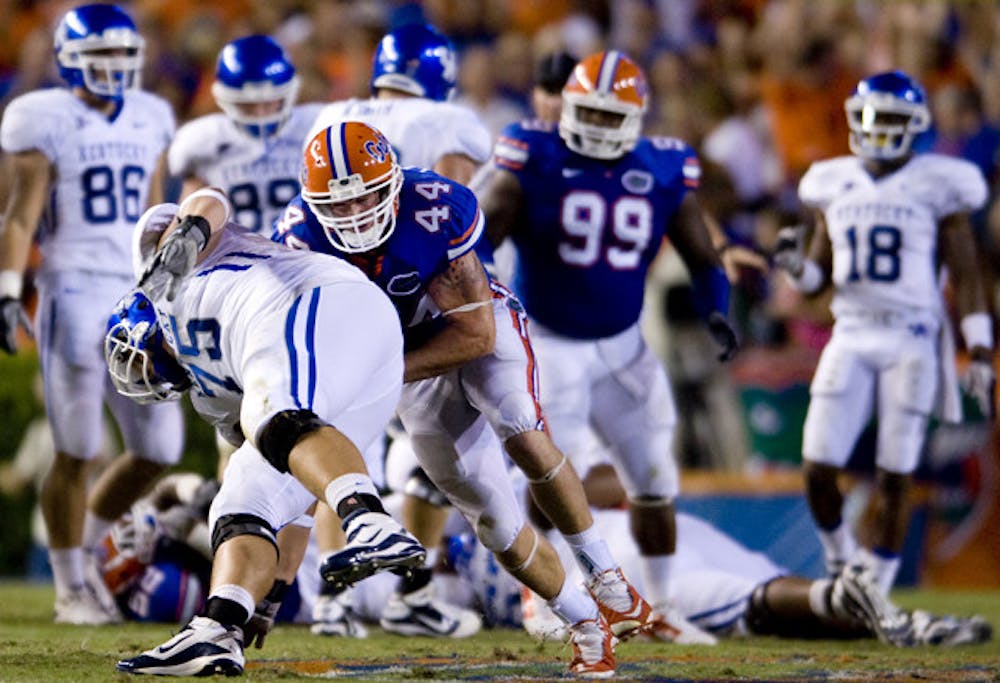The Gators have used an exotic defensive formation to stop the Southeastern Conference’s leading rusher in consecutive weeks, but some believe that wasn’t its intended purpose.
Ever since Crimson Tide running backs Mark Ingram and Trent Richardson shredded the Gators’ run defense for 195 yards in last season’s SEC Championship, Florida has been looking for a fix.
“In my head, [I felt like the package was designed for Alabama],” senior linebacker Brandon Hicks said. “Ever since the [SEC Championship], I wanted it back so bad. That game hurt so bad. We felt like we had the team to win, but we didn’t execute everything we were supposed to.”
No. 7 UF will face its toughest test of the season Saturday against No. 1 Alabama when it goes against Ingram and Richardson, who average 8.45 yards per carry and have combined for 664 rushing yards in four games this season.
“I think we finally have that kind of personnel that we have the flexibility to [use this package],” coach Urban Meyer said.
But it won’t be easy.
Ingram, who missed the first two games of the season after undergoing arthroscopic knee surgery, has run for 308 yards in two games since his return.
The “heavy” package features three defensive tackles on the line and pushes defensive end Duke Lemmens to a hybrid end/linebacker position on the strong side.
“Seeing that [our linebackers are] smaller than other teams’, we don’t have to deal with them trying to stack a big lineman in there to try and knock us off the ball,” Hicks said of the benefits to the package.
“We have [Lemmens] to stand him up and set the edge. That way we can come downhill and hit the ball as fast as we possibly can, basically to our advantage to use our own speed to kill the run.”
The defensive scheme has already helped limit then-SEC leading rushers Tauren Poole of Tennessee and Derrick Locke of Kentucky to an average of 63 rushing yards the past two weeks.
However, the expected return of defensive tackles Lawrence Marsh, Terron Sanders, Brandon Antwine and Dominique Easley from injuries will strengthen the front four even more in its attempt to stop Ingram and Richardson.
New defensive coordinator Teryl Austin emphasized the run-stop alignment in the spring, but a similar formation was already part of the Gators’ arsenal.
“We actually had one when [defensive coordinator Charlie] Strong was here,” Hicks said, “but we never really had to use it because we would hit the ball before it crossed the line of scrimmage.”






